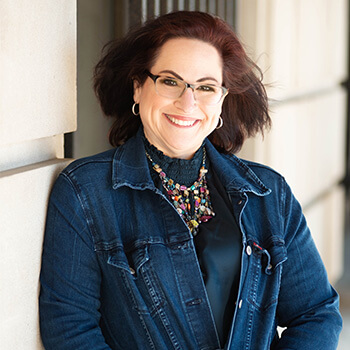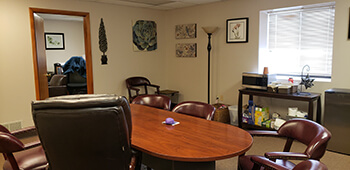
If you’ve experienced childhood trauma, you may find yourself stuck in unhealthy or toxic relationships, even while thriving in other areas of your life. Recognizing and breaking free from these patterns can feel overwhelming, especially when they seem familiar or comfortable due to past experiences. However, it is possible to break the cycle, set healthy boundaries, and create relationships that are truly fulfilling. Doing so is a critical step toward building a life worth living.
What is a Toxic Relationship?
A toxic relationship is one that harms your emotional, psychological, or even physical well-being. These relationships often involve manipulation, control, disrespect, or a lack of emotional support. While every relationship has ups and downs, toxic relationships are marked by a consistent pattern of negativity and harm.
It’s important to note that toxic relationships can have good moments, which often makes it harder to leave. However, if the bad consistently outweighs the good, the relationship may be toxic.
For women who’ve experienced childhood or adolescent trauma, unhealthy dynamics can feel familiar. Past trauma can teach the brain that dysfunction is normal, making it harder to recognize red flags early on.
Signs You Might Be in a Toxic RelationshipToxic relationships can take many forms, but here are some common signs to watch for:
- Constant Criticism: You’re frequently put down, belittled, or made to feel inadequate.
- Emotional Manipulation: Your partner uses guilt, blame, or shame to control your behavior or emotions.
- Lack of Support: You feel emotionally unsupported, even during difficult times.
- Codependency: You feel responsible for your partner’s happiness, often at the expense of your own needs.
- Constant Drama: Frequent arguments, tension, or instability dominate the relationship.
If these dynamics resonate with you, you are not alone—and breaking free is within your reach.
Why Trauma Survivors Get Stuck in Toxic Relationships
Trauma survivors often struggle with feelings of worthlessness or fear of abandonment, which can lead to tolerating unhealthy behaviors in relationships. Trauma can create a belief that love and pain are intertwined, making it difficult to distinguish between healthy and unhealthy dynamics.
This is not your fault. Recognizing the impact of trauma on your relationship choices is the first step toward change.
How to Break the Cycle of Toxic Relationships
Although breaking free from toxic relationships can feel daunting, it becomes more manageable with self-awareness and actionable steps. Here’s how to get started:
1. Recognize the Pattern
Begin by reflecting on your relationship history. Do you notice a pattern of partners who are emotionally unavailable, controlling, or critical? Are you often left feeling drained or anxious? Recognizing these patterns is the first step toward breaking free.
2. Acknowledge Your Worth
Believing you deserve better is often the hardest part of leaving a toxic relationship. Trauma can deeply impact your self-worth, but it’s essential to remember that you deserve love and respect. Practice self-compassion and remind yourself of your inherent value.
3. Set Clear Boundaries
Boundaries are essential to protect yourself from toxic behaviors. Examples include:
- “I will not tolerate disrespectful language.”
- “My emotional needs are as important as my partner’s.”
- “I deserve to feel safe and supported.”
Be clear, firm, and consistent with your boundaries. Toxic individuals may resist, but holding your ground is crucial.
4. Challenge Negative Thinking
Trauma can lead to harmful beliefs like “I’m not worthy of love” or “I can’t do better.” Challenge these thoughts by recognizing them as remnants of your past, not reflections of your present. Replace them with affirmations such as, “I deserve respect” and “Healthy love is possible for me.”
5. Get Comfortable with Discomfort
Leaving a toxic relationship can be uncomfortable, especially if dysfunction feels familiar. You might feel guilty or fear being alone. Remind yourself that this discomfort is temporary and necessary for growth. Lean on supportive friends, family, or a therapist to help navigate this period.
6. Practice Self-Care
Healing requires intentional self-care. Engage in activities that nurture your well-being, like journaling, mindfulness, or spending time with uplifting loved ones. Therapy, particularly approaches like Dialectical Behavior Therapy (DBT), can be incredibly helpful in managing emotions and healing from trauma.
What to Do After Leaving a Toxic Relationship
Once you’ve left a toxic relationship, the healing process begins. Here are steps to support your journey:
- Limit contact: Minimize or cut off contact with the toxic person to protect your emotional health.
- Seek Support: Work with a therapist or join a support group to process your emotions and rebuild your confidence.
- Rediscover Yourself: Reconnect with your passions, hobbies, and values to restore your sense of identity.
You Deserve Healthy, Fulfilling Relationships
Breaking the cycle of toxic relationships is challenging, especially if trauma has shaped your past experiences. However, by recognizing the patterns, setting boundaries, and prioritizing your healing, you can create space for relationships that uplift and support you.
Above all, remember that you are worthy of love that nurtures, respects, and empowers you. You have the strength to break free and build the healthy, fulfilling relationships you deserve.
If you’d like more guidance on healing from trauma and creating healthier relationships, subscribe to my email list for FREE resources to support your journey.




